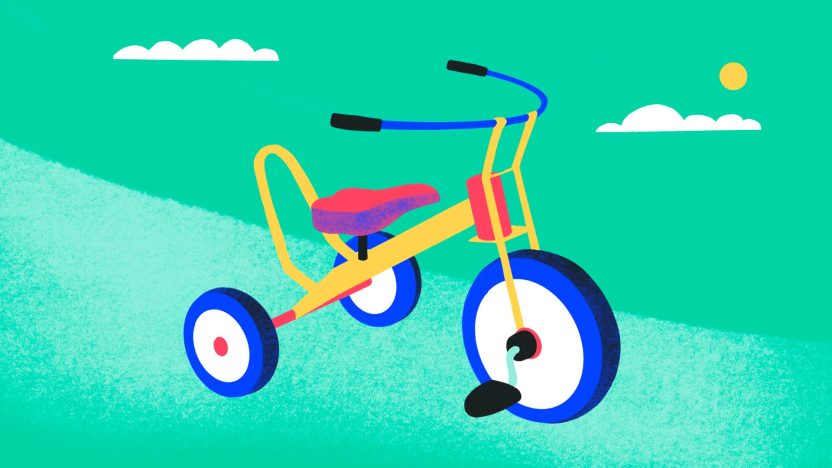The global workforce that’s bringing its own AI to work
An analysis of employee-driven AI adoption in the modern workplace
by MAIZE

A subtle shift is taking place in the complex ecosystem of the modern enterprise. While corporate boardrooms around the world debate AI strategies and implementation roadmaps, a niche group of employees has quietly embarked on their own AI-powered journeys. These individuals are not waiting for corporate approval. Instead, they’re covertly introducing AI tools into their workflows, reshaping their roles and productivity in ways that are both intriguing and potentially disruptive.
This phenomenon, known as BYOAI (Bring Your Own AI), is more than just a trend; it’s a revealing insight into the evolving dynamics of the modern workplace. These AI adopters form a niche, a hidden ecosystem within the corporate structure that deserves closer examination. They are not just early adopters but indicators of deeper currents in the ever-changing workplace landscape.
Highlight ✦ The BYOAI phenomenon reveals a subset of employees who are adopting AI tools on their own. They are driven by the pressures of increasingly demanding work environments.
From the US to China to Australia, the scale of the BYOAI phenomenon is remarkable. According to the Work Trend Index sponsored by Microsoft and LinkedIn, 78% of AI users worldwide are bringing their own AI tools to work, rising to 80% in small and medium-sized companies. A survey by Fishbowl, a corporate social networking platform, found that only 32% of respondents who use AI at work reported they’re using generative AI with their boss’ knowledge. This survey included employees from major companies such as Amazon, Bank of America, IBM, JP Morgan, and Nike. Similarly, a study by Snaplogic found that 40% of mid-level office workers in Australia, the UK, and the US use these tools without disclosing their usage to their employer or colleagues.
What drives these employees to such lengths? At its core, this behavior stems from a primal instinct in the corporate world: the desire to maintain a competitive edge. In an increasingly demanding and complex work environment, where expectations are constantly rising, and the pace of change is relentless, these individuals see AI as their trump card. The Snaplogic survey found that more than two-thirds (67%) of users think that AI will save them one to five hours of work per week, mostly on research tasks.

A new digital divide? Implications and ethical dilemmas
This independent use of AI highlights a growing disconnect between organizational policies and employee practices. While in 2023, 75% of 2,000 IT decision-makers in the US, Canada, the UK, France, Germany, the Netherlands, Japan, and Australia were considering or implementing bans on ChatGPT and other generative AI applications in the workplace, employees are finding ways around these restrictions. The methods employed by these AI adopters are as varied as they are ingenious. Some integrate ChatGPT into native apps disguised as workplace tools, while others resort to more rudimentary tactics such as using privacy screens or discreetly accessing AI on personal devices. Online communities like Reddit are buzzing with tips and tricks for leveraging AI undetected, a testament to the lengths to which these employees will go to maintain their advantage.
This behavior, even if practiced by a minority of workers, raises profound questions about the nature of work in the AI age. Are we witnessing the birth of a new kind of digital divide in the workplace? On one side are the AI adopters who are pushing the boundaries of productivity and problem-solving. On the other are those who, either by choice or mandate, cling to traditional methods. The result is an uneven playing field where some employees have access to powerful AI assistants while others do not.
Highlight ✦ The use of AI tools by individuals is creating an unofficial two-tiered system in the workplace, raising questions about fairness and equal opportunity.
In addition, this behavior highlights a growing disconnect between organizational policies and employee practices. A lack of transparency on both sides further complicates the situation. A survey by Workplace Intelligence and UKG found that 54% of employees say they have “no idea” how their companies are using AI. Conversely, 78% of employees want their employer to be open about how AI could directly improve their workflow.
As we observe this phenomenon, it’s crucial to consider the ethical implications. Are these AI adopters simply being proactive and innovative, or are they crossing a line by using unauthorized tools that could potentially compromise company data or lead to flawed job decisions? Interestingly, the Snaplogic survey found that 54% of respondents said they would avoid using AI if it meant sharing confidential information, such as product sales with the AI program, suggesting some level of awareness of data security risks

Reshaping the future of work: challenges and considerations
This under-the-radar AI revolution is forcing us to confront tough questions about trust, empowerment, and the very nature of work in the twenty-first century. Are our current organizational structures and policies equipped to handle the breakneck pace of technological change? How can companies balance the need for control and standardization with employees’ apparent desire to innovate and improve their productivity?
Concerns about data security, regulatory compliance, and quality control are reasonable and should not be dismissed lightly. However, the tenacity of employees to find ways to use AI suggests that traditional top-down approaches to technology adoption may be becoming outdated.
Highlight ✦ The stealthy adoption of AI tools by employees is forcing organizations to confront complex ethical questions about fairness, transparency, and the perils of innovation in the workplace.
As we look to the future, it’s clear that the landscape of work is being reshaped not only by AI itself, but by the human response to it. AI adopters in the workplace are not just early adopters of a new technology; they are manifestations of a deeper shift in how employees view their roles, skills, and relationships with their employers.
The story of these AI pioneers is a complex tale of human adaptability and the search for new performance tools to deal with the pressures of the modern workplace — where workers are increasingly expected to do more in less time — and the ongoing negotiation between individual ambitions and organizational needs. As AI continues to evolve and permeate our workplaces, this tension will undoubtedly shape the future of work in ways we are only beginning to understand.
Ultimately, the BYOAI phenomenon acts as a mirror that reflects the complexities, anxieties, and aspirations of the modern workplace. As we move forward into this AI-augmented future, the lessons learned from observing these early adopters may prove invaluable in navigating the challenges and opportunities that lie ahead. The key to harnessing AI’s potential while mitigating its risks is promoting transparency, providing adequate training, and creating an environment where innovation and compliance can coexist.
This article is part of our research project


